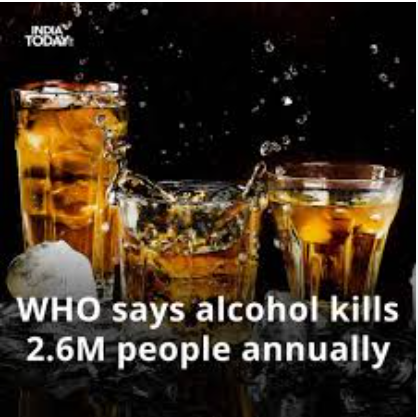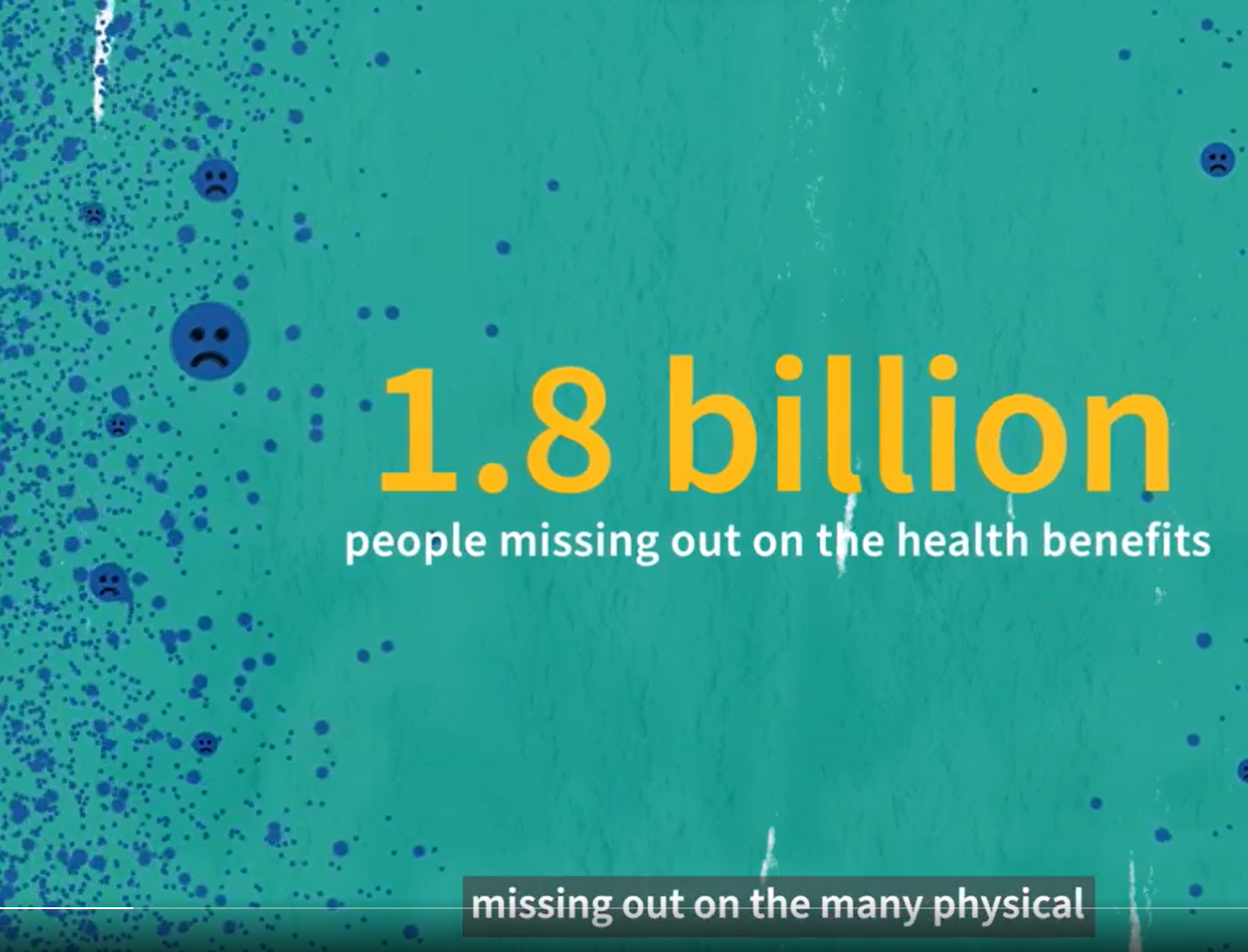By Joke Kujenya
ALCOHOL IS responsible for nearly three million deaths annually making it alarming high, says a disclosure by the World Health Organization (WHO) as it announced on Tuesday.
Despite a slight decline in the death rate over recent years, the situation remains dire, with the number of fatalities deemed “unacceptably high,” the organ decries.
In its latest alcohol and health report, the United Nations health agency also highlights that alcohol is a contributing factor in almost one in every twenty deaths worldwide each year.
These deaths result from a range of causes, including drunk driving, alcohol-induced violence and abuse, and various diseases and disorders.
In 2019, the latest year for which data is available, alcohol consumption accounted for 2.6 million deaths, representing 4.7 percent of all global fatalities that year, notes the report, with the majority of these deaths, nearly 75 percent, were among men.
WHO Director-General Tedros Adhanom Ghebreyesus emphasized that while there has been some reduction in alcohol consumption and related harm globally since 2010, the health and social burden remains excessively high.
He also pointed out that young people are particularly affected, with 13 percent of alcohol-attributable deaths occurring among individuals aged 20 to 39.
Alcohol consumption is linked to numerous health conditions, including liver cirrhosis and various cancers.
“In 2019, noncommunicable diseases accounted for 1.6 million of the alcohol-related deaths, with 474,000 resulting from cardiovascular diseases, 401,000 from cancer, and 724,000 from injuries, including traffic accidents and self-harm.”
The report also noted that alcohol abuse increases susceptibility to infectious diseases such as tuberculosis, HIV, and pneumonia.
Still in 2019, approximately 209 million people, or 3.7 percent of the global population, were living with alcohol dependence.

The report indicated that total per capita alcohol consumption worldwide had slightly decreased from 5.7 liters in 2010 to 5.5 liters in 2019.
However, alcohol consumption is not uniformly distributed across the globe.
Over half of the global population over the age of 15 abstains entirely from alcohol.
Europe reported the highest per capita alcohol consumption at 9.2 liters, followed by the Americas at 7.5 liters. Predominantly Muslim countries in Northern Africa, the Middle East, and Asia reported the lowest consumption levels.
The report also revealed that in 2019, individuals who consumed alcohol averaged 27 grams of pure alcohol per day, equivalent to roughly two glasses of wine, two small bottles of beer, or two shots of spirits.
This level of consumption is associated with increased risks of numerous health conditions, as well as higher mortality and disability rates.
A significant portion of current drinkers, 38 percent, reported engaging in heavy episodic drinking, defined as consuming at least 60 grams of pure alcohol on one or more occasions in the previous month.
Among 15- to 19-year-olds globally, 23.5 percent were identified as current drinkers, with the figure rising to over 45 percent in Europe and nearly 44 percent in the Americas.
The WHO underscored the importance of improving access to quality treatment for substance use disorders.
In 2019, the proportion of people accessing such treatment services varied widely, from below one percent to 35 percent in different countries. Vladimir Poznyak, head of WHO’s unit for alcohol, drugs, and addictive behaviors, cited stigma, discrimination, and misconceptions about treatment efficacy as significant barriers to addressing these critical gaps in care.
The WHO’s report on alcohol and health indicates that alcoholism was indeed a significant global health issue in 2019 as it was responsible for 2.6 million deaths that year, accounting for 4.7 percent of all deaths worldwide.
The report highlighted that the majority of these deaths were among men and that young people were disproportionately affected. It also pointed out that alcohol consumption is linked to a range of health conditions, including liver cirrhosis, various cancers, cardiovascular diseases, and injuries from accidents and self-harm.
Additionally, alcohol abuse was found to increase susceptibility to infectious diseases.
The data showed that in 2019, a large number of people lived with alcohol dependence, and heavy episodic drinking was prevalent among current drinkers, including adolescents and young adults.
Despite a slight reduction in per capita alcohol consumption globally, the health and social burden of alcohol use remained unacceptably high, emphasizing the ongoing need for effective public health interventions and access to treatment services.
Notably, the WHO report suggests that:
- Alcohol caused nearly three million deaths annually.
- Alcohol consumption in 2019 accounted for 2.6 million deaths, representing 4.7 percent of all global fatalities.
- Nearly 75 percent of these deaths were among men.
- Young people were particularly affected, with 13 percent of alcohol-attributable deaths occurring among individuals aged 20 to 39.
- Alcohol consumption is linked to numerous health conditions, including liver cirrhosis and various cancers.
- Noncommunicable diseases accounted for 1.6 million of the alcohol-related deaths in 2019.
- 474,000 deaths were from cardiovascular diseases.
- 401,000 deaths were from cancer.
- 724,000 deaths were from injuries, including traffic accidents and self-harm.
- Alcohol abuse increases susceptibility to infectious diseases such as tuberculosis, HIV, and pneumonia.
- Approximately 209 million people, or 3.7 percent of the global population, were living with alcohol dependence in 2019.
- Total per capita alcohol consumption worldwide slightly decreased from 5.7 liters in 2010 to 5.5 liters in 2019.
- Over half of the global population over the age of 15 abstains entirely from alcohol.
- Europe had the highest per capita alcohol consumption at 9.2 liters, followed by the Americas at 7.5 liters.
- Predominantly Muslim countries in Northern Africa, the Middle East, and Asia reported the lowest consumption levels.
- In 2019, individuals who consumed alcohol averaged 27 grams of pure alcohol per day, roughly equivalent to two glasses of wine, two small bottles of beer, or two shots of spirits.
- 38 percent of current drinkers reported engaging in heavy episodic drinking, defined as consuming at least 60 grams of pure alcohol on one or more occasions in the previous month.
- Among 15- to 19-year-olds globally, 23.5 percent were identified as current drinkers, with over 45 percent in Europe and nearly 44 percent in the Americas.
- Emphasized the importance of improving access to quality treatment for substance use disorders.
- In 2019, the proportion of people accessing treatment services ranged from below one percent to 35 percent in different countries.
- Stigma, discrimination, and misconceptions about treatment efficacy were significant barriers to addressing gaps in care.
At JKNewsMedia, our dedication to delivering reliable news and insightful information to our cherished readers remains unwavering. Every day, we strive to provide you with top-notch content that informs and enlightens. By donating to JKNewsMedia, you directly contribute to our mission of delivering quality journalism that empowers and informs. Your support fuels our commitment to bringing you the latest updates and in-depth analysis. Let's continue to uphold the highest standards of journalism and serve our community with integrity and dedication. Thank you for being a part of the JKNewsMedia family and for your ongoing support.





